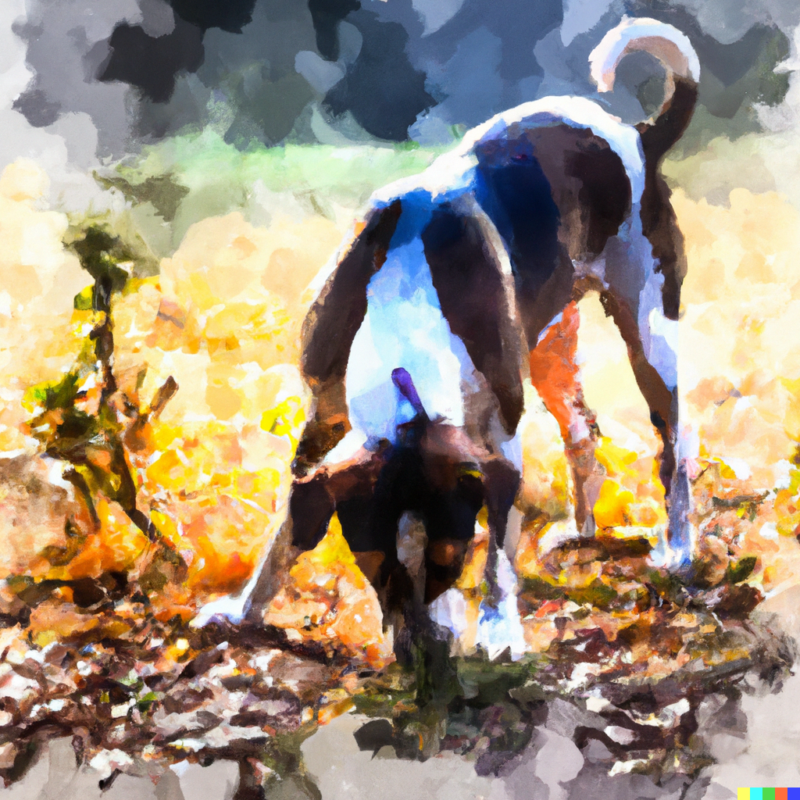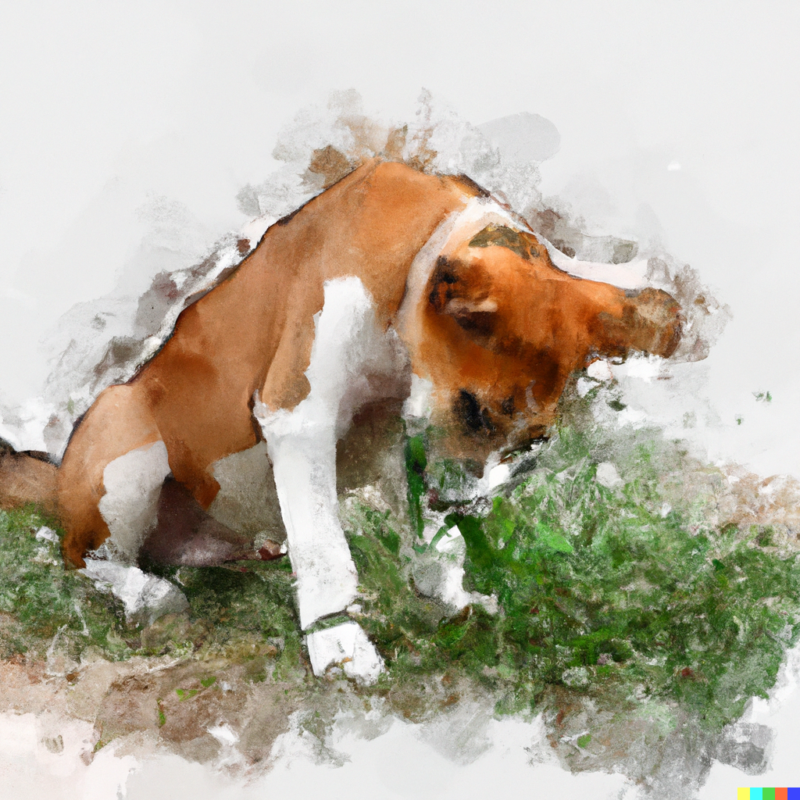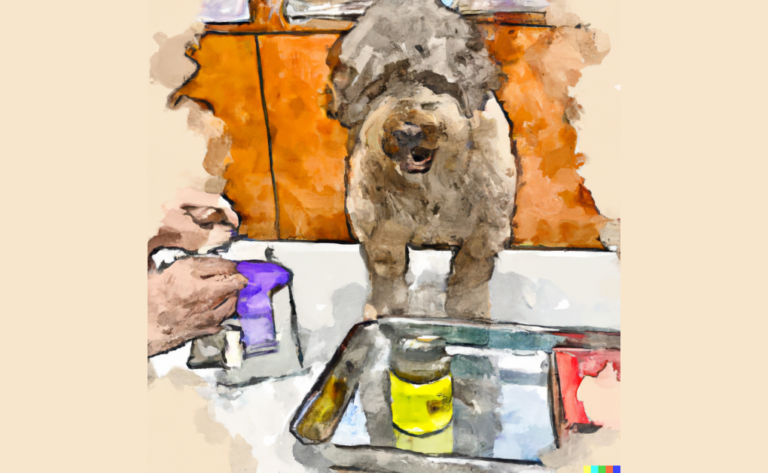Don’t be an April Fool: 13 Myths About Dogs
Introduction
When Mark, a first-time dog owner, brought home his playful Golden Retriever, Charlie, he was eager to do everything right. However, he soon found himself overwhelmed by the vast amount of conflicting information and advice from friends, family, and the internet.
We all love our four-legged friends, but unfortunately, many believe some untrue and outdated notions about dogs. Do you know what’s true and false about our canine companions?
For centuries man has kept canines as pets or working animals, and beliefs have been passed down through generations. Unfortunately, this knowledge needs to be corrected or adequately applied to modern animal care.
It’s essential to realize the facts to make the best decisions when caring for our furry friends. To help you separate fact from fiction, here are 13 common myths about dogs that have been debunked by science.
1. Dogs Have Poor Color Vision
Dogs have two color receptors in their eyes, allowing them to see in color. However, they cannot distinguish between shades of green and red like humans can. Instead, blue and yellow tones are more easily distinguishable for dogs. This means that dogs are not entirely colorblind but only partially so. They can see blue, yellow, and grey but only have a little ability to see color beyond these three hues.
How dogs perceive the world is quite different from how humans do. While dog owners may be able to appreciate the beauty of a rainbow or a sunset, mostly, dogs will only be able to make out the primary colors of blue, yellow, and grey. This does not mean they cannot enjoy the world around them; it just means that their experience is slightly different from ours. Dogs still have a fantastic sense of smell and hearing, which helps them explore their environment in ways that people who love dogs cannot even imagine!
2. Your Dog Isn’t Healthy if He Has a Dry, Warm Nose

The myth that a dry, warm nose means your dog is sick is false and should not be taken as an accurate sign of illness. A dry, warm nose can indicate a dog’s activity level, the amount of water they drink, or their environment. Your pup’s nose may be warm to the touch and dry if exposed to different temperatures, humidity levels, eating patterns or if they have been under physical or psychological stress.
It is important to note that a warm and dry nose on a dog is typical and not necessarily a sign of illness. However, if your pet’s nose is constantly dry, cracking, or running, it may indicate sickness and should be checked by a veterinarian. Therefore, it is essential to monitor your pet’s health closely and seek medical attention if you notice any changes in their behavior or physical condition.
3. It’s Impossible to Teach an Old Dog New Tricks
It is a common misconception that old dogs cannot learn new tricks; in reality, dogs of any age can discover new behaviors and commands with proper training. Training sessions should be fun and upbeat, as this will help keep the dog engaged and motivated. Rewards should also be given for progress made to encourage the dog’s continued success.
Trish McMillan, a certified animal behaviorist, was able to train a 9-year-old Doberman to earn its Canine Good Citizen title within a few months. This proves that even older dogs can learn new tricks if given the proper guidance and support. Even if your dog has physical impairments, it is still possible to teach the dog new behaviors and commands with patience and consistency.
If you have a friend with a new pup, consider getting them gifts to help them in their training journey, such as treats or toys designed to teach obedience skills. This helps them prevent aggressive behavior, especially when in public. Aggressive dogs tend to have
4. Seven Dog Years are Equal to One Human Year
The idea that one human year equals seven dog years is a myth, and this ratio has been around for a long time, but data do not support it. Instead, the age comparison between humans and dogs depends on breed, size, and genetic makeup. For example, smaller dogs can act like puppies at 16 years old, while larger species may be considered over 130 in human years.
A group of researchers at Purdue University looked into developing a formula for dog age based on the size of the dog and its chronological age. However, they found that no single formula accurately reflects the aging process of all dogs. Instead, they concluded that each breed ages differently and should be evaluated individually to determine their age in human years. Therefore, the seven-to-one ratio of dog years to human years needs to be more accurate and should not be used as a reliable measure of a dog’s age.
5. Saliva From Dogs Has Been Shown to Heal Cuts and Wounds

The idea that dog saliva can heal wounds is a myth. Dog saliva cannot heal wounds, and in fact, it can make them worse. Dog bites can cause significant injury and should be taken seriously. It is essential to seek medical attention if a dog has bitten you.
Dog saliva does have some antibacterial properties due to its slightly more alkaline pH than human saliva, which can discourage some bacteria from reproducing. However, this is not enough to make it antibacterial, and it can still cause illness in humans. In addition, a 2012 study identified 353 different types of bacteria living in dogs’ mouths, making it even more dangerous to use their saliva as a wound-healing agent.
6. Dogs Who Wag Their Tails are Happy
Tail wagging in dogs is often thought to signify happiness, but this is not always the case. In reality, tail wagging can mean many different things, and it’s essential to look at the type of wag and the ears, eyes, and body posture of your dog to determine its genuine emotion. For example, a 2013 study in Current Biology found that a vigorous tail wag to the right usually means happiness at seeing its owner, while slow wags of a tail held halfway down can mean fear or insecurity.
It’s important to remember that tail wagging is just one way your dog communicates with you – there are other secrets your dog wishes it could tell you. Paying attention to subtle changes in behavior and body language can help you better understand what your pup is trying to say to you. If you’re ever unsure about how your dog is feeling, take some time to observe them and attempt to decipher their message.
7. Dogs Can’t Digest Grains
Contrary to popular belief, dogs can digest grains and need them in their diet. However, a grain-free diet can lead to a severe heart disease called Canine dilated cardiomyopathy (DCM), so owners need to ensure their pet’s diet includes grains. Dogs on a grain-inclusive diet are less likely to develop DCM than those on a grain-free diet.
It is also essential for owners to be aware of certain types of human food that are bad for dogs, such as chocolate, grapes, raisins, onions, and garlic. Human nutrition in moderation is adequate for dogs but should not make up more than 10% of a dog’s diet. Home-cooked meals can be deficient in essential nutrients for dogs and should be avoided unless they are balanced with supplements or commercial dog food. It is best to consult with your veterinarian before making any changes to your pet’s diet.
8. Dogs Can Swim Well
Contrary to popular belief, not all dogs are good swimmers. Breeds like pit bulls, bulldogs, mastiffs, dachshunds, and boxers, and many dogs have powerful chests and heavy skulls that make them less buoyant in the water. Smaller breeds should also be handled with care when swimming, as they are more prone to hyperthermia.
To determine if your pup is a capable swimmer, you can observe if he enjoys getting wet and being in the water. Generally speaking, even if a dog is suited for swimming, it doesn’t mean that every individual can swim with confidence and agility.
Often it takes patience to introduce a new pup to the pool or beach and give him some time to build up confidence in his ability to how far he can go within the water. That’s why always ensure that you supervise your pup while they’re near or in the water – just as you would with children – since there are no guarantees that they will be an expert swimmer right away!
Dog lovers need to understand their dogs’ swimming abilities and provide them with the necessary safety precautions when in the water. Life jackets, pool ramps, and other safety devices can help keep your pup safe while they enjoy a day in the pool or lake.
9. Only Sick Dogs Eat Grass

Dogs eating grass is a natural behavior that a variety of reasons can cause, and it may be due to an upset stomach, boredom, or even an attempt to supplement their diet with nutrients they lack. Eating grass may help ease sickness, but it should not be relied upon as a cure-all for any ailment.
It is important to remember that certain types of human food, such as chocolate, grapes, raisins, onions, and garlic, are bad for dogs and should never be given to them. Human nutrition in moderation is adequate for dogs but should not make up more than 10% of a dog’s diet. Home-cooked meals can also be deficient in nutrients critical for a dog’s health, so it is essential to consult your veterinarian before making any changes to your pet’s diet.
10. A Well-Trained Dog Will Never Bite
A well-trained dog is less likely to attack than an untrained one, but it is impossible to guarantee that a dog will never bite. Dogs may bite for various reasons, such as fear, frustration, defense, or intimidation. Proper dog training and socialization can help reduce the risk of a dog biting by teaching them how to respond appropriately in different situations. This includes teaching them basic commands such as sit and stay and providing positive reinforcement when they obey orders.
It is important to remember that even if you train dogs properly, there is still a chance that the dog will bite. A dog’s mouth is not any cleaner than a human’s, and they explore the world with their mouths and noses, so you never know what they have been eating. While some pathogens can be passed on to humans in dog saliva, severe infections are rare. Therefore, it is essential to always be cautious around dogs and supervise children when interacting with them.
11. Because of Their Fur, Several Dog Breeds are Hypoallergenic
The idea that certain dog breeds are hypoallergenic because of their skin is a myth. All dogs produce allergens, but some may pay less than others. Dogs that don’t shed, like poodles, or smaller dogs that shed less, are less likely to have a large amount of allergen. The amount of allergens produced by a dog is not related to the breed of the dog.
Allergic reactions are caused by the proteins found in a dog’s saliva and dander, not its fur. Even without a coat, all dogs produce saliva and dander (tiny skin particles). So as much as people may believe that dogs with less hair have fewer allergens, that isn’t true!
It’s important to note that no matter what breed you get, all dogs must be groomed and washed to reduce shedding as much as possible. Regular brushing helps remove stray hairs from your home before they become airborne allergens. Vacuuming frequently can also help minimize allergic reactions from dander particles left behind by dogs in the house.
12. Spaying or Neutering Your Pets When They are Puppies or Kittens Will Prevent Them from Having Future Behavioral Problems
Spaying and neutering dogs at a young age were once thought to be the best way to prevent future behavioral issues, but recent studies have shown that this is not necessarily true. Allowing dogs to keep their reproductive organs intact into adulthood has been found to have additional health benefits. This has led more veterinarians and owners to hold off on spaying or neutering until six months to a year after the dog’s birth.
Spaying or neutering too early can lead to problems like aggression or resource guarding. Beyond that, it may also be unhealthy for puppies to be put under anesthesia due to their immature organs and developing urinary and reproductive systems.
The bottom line is that while spaying or neutering is essential for keeping pet populations low, you should always wait until your pup is old enough to cope with any associated stress and health risks properly!
13. A Dog’s Mouth is Cleaner Than a Human’s
A dog’s mouth is often considered cleaner than a human’s, but this is not necessarily true. Dog saliva has a slightly more alkaline pH than human saliva, which can discourage some bacteria from reproducing. However, dog saliva is not truly antibacterial and can still cause human illness. A 2012 study identified 353 different types of bacteria living in dogs’ mouths, showing that their mouths are no cleaner than ours.
Dogs explore the world with their mouths and noses, so you never know what they have been eating or licking. While some pathogens can be passed on to humans in dog saliva, severe infections are rare. It is important to remember that while a dog’s mouth may not be any cleaner than a human’s, it is still essential to practice good hygiene when handling dogs and their toys or food dishes. Regularly washing hands after contact with dogs and cleaning toys and food dishes regularly will help keep everyone healthy.
You need to speak with your vet about the best time for surgical intervention for your pet. An adequately educated decision should consider both benefits and risks associated with spaying or neutering at various stages of development.
Frequently Asked Questions
Disclaimer: The information provided on this veterinary website is intended for general educational purposes only and should not be considered as a substitute for professional veterinary advice, diagnosis, or treatment. Always consult a licensed veterinarian for any concerns or questions regarding the health and well-being of your pet. This website does not claim to cover every possible situation or provide exhaustive knowledge on the subjects presented. The owners and contributors of this website are not responsible for any harm or loss that may result from the use or misuse of the information provided herein.







